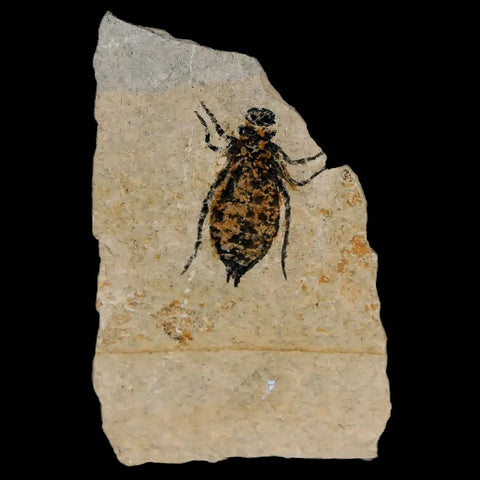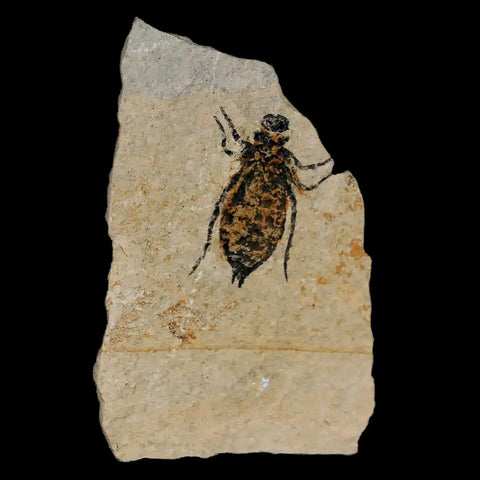0.6" Dragonfly Larvae Fossil Libellula Doris Plate Upper Miocene Piemont Italy Display
Location: Piemont Area, Santa Vittoria d’Alba. Italy
Weight: 0.7 Ounces
Dimensions: 3.1 Inches Long, 2.1 Inches Wide, 0.5 Inches Thick (Display)
Dimensions: 1.5 Inches Long, 1 Inch Wide, 0.2 Inches Thick (Plate)
Insect Dimensions: 0.6 Inches Long, 0.4 Inches Wide
Comes with a Free White Display Box.
Comes with a Certificate of Authenticity.
The item pictured is the one you will receive.
Upper Miocene, 16 Million-Year-old
Fossil Dragonfly Larvae, Libellula Doris
The dealer that I acquired this insect plate from. He has access to a special shale outcrop in the foothills of the Alps where he quarries them. The thin plate has three complete specimens aesthetically arranged The detail is excellent, with eye-catching visual appeal. Libellula is a genus of extant dragonflies, commonly called Skimmers. Many of the members of this genus are brightly colored or have banded wings.
Dragonflies belong to the order Odonata, family Libellulidae because the hindwing is broader than the forewing. It is characterized by large multifaceted eyes, two pairs of strong transparent wings, and an elongated body. Dragonflies can sometimes be mistaken for damselflies, which are morphologically similar; however, adults can be differentiated by the fact that the wings of most dragonflies are held away from, and perpendicular to, the body when at rest. Dragonflies possess six legs (like any other insect), but most of them cannot walk well. Dragonflies are among the fastest flying insects in the world.
Dragonflies are important predators that eat mosquitoes, and other small insects like flies, bees, ants, wasps, and very rarely butterflies. They are usually found around marshes, lakes, ponds, streams, and wetlands because their larvae, known as “nymphs”, are aquatic. Some 5680 different species of dragonflies (Odonata) are known in the world today.
Female dragonflies lay eggs in or near water, often on floating or emergent plants. When laying eggs, some species will submerge themselves completely in order to lay their eggs on a good surface. The eggs then hatch into naiads. Most of a dragonfly's life is spent in the naiad form, beneath the water's surface, using extendable jaws to catch other invertebrates (often mosquito larvae) or even vertebrates such as tadpoles and fish. They breathe through gills in their rectum, and can rapidly propel themselves by suddenly expelling water through the anus. Some naiads even hunt on land, an aptitude that could easily have been more common in ancient times when terrestrial predators were clumsier.
The larval stage of large dragonflies may last as long as five years. In smaller species, this stage may last between two months and three years. When the naiad is ready to metamorphose into an adult, it climbs up a reed or other emergent plant. Exposure to air causes the naiad to begin breathing. The skin splits at a weak spot behind the head and the adult dragonfly crawls out of its larval skin, pumps up its wings, and flies off to feed on midges and flies. In-flight the adult dragonfly can propel itself in six directions; upward, downward, forward, back, and side to side. The adult stage of larger species of dragonfly can last as long as five or six months.

















